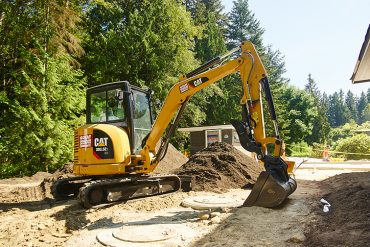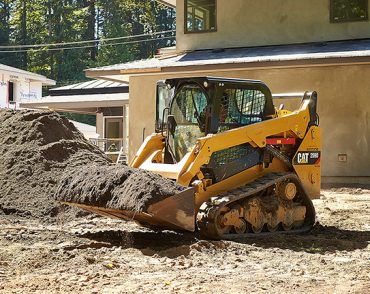
John Bleasby
Is large equipment ownership anxiety holding your company back?
Canadian ContractorThere are alternatives today with benefits for contractors of all sizes
As increasing numbers of residential contractors develop more vertically-integrated business operations, they are beginning to turn to large equipment ownership alternatives in order to meet short-term project demands, manage costs, and meet project deadlines. An unpredictable market, along with rising costs and fierce competition, have all contributed to the growth of the rental industry, for example. Meanwhile, leasing reduces capital outlays for those needing equipment on a longer term basis beyond on a project-by-project basis.
What this evolution also means is that contractors have easier, more economical access to the very latest machines. Technology has arrived on many construction sites in Canada in many forms. For example, monitoring the location of smaller tools both in terms of on-site security and inventory control is something that has been available to contractors of every size for some time. It’s now available for larger equipment too, managed and communicated using mobile apps, resulting in healthier, more efficient, and profitable business operations.
With this in mind, Canadian Contractor asked Scott Wakefield, Rental Sales Manager for Finning Canada to indicate where the equipment industry is headed.
What’s behind the growing interest in options beyond straight ownership?
The construction business is a cost management business. The cost of new equipment and the after-purchase expenses associated with ownership — transporting, maintaining, repairing and storing — make equipment one of the primary costs of doing business. When you consider the impact of large down payments and financing, and then add in varying project demands, workloads etc., having flexible options to manage equipment availability and costs becomes a necessity versus a nice-to-have. All of this makes renting or leasing an appealing alternative, provided companies can be confident they can get the equipment they need, when they need it.
 How are equipment manufacturers responding to this shift in interest away from ownership to the alternatives?
How are equipment manufacturers responding to this shift in interest away from ownership to the alternatives?
The industry is giving construction companies more options for accessing the right equipment for the job, anywhere from ownership, of course, to rental and variations in between. Developing an equipment program to address variable needs of contractors and builders is part of the equipment industry’s long-term business strategy.
When you speak of variations between actual ownership and short term rentals, do you mean leasing?
Leasing is often the starting point when looking at alternatives to ownership, offering lower upfront costs with the option to upgrade to the latest equipment every few years. Owners/operators can stay on top of new technologies with fixed lower monthly costs and walk away at the end of the lease term. However, leasing equipment does involve a longer-term commitment and often more formal agreements with many conditions. It may not suit all business operators.
Which brings us to rentals, I suppose, particularly for smaller operators.
That’s right. Renting has become a practical option for businesses of all sizes, in fact, providing access to equipment for the job, the latest technologies and the ability to balance equipment availability and costs. There’s also the business benefit of having flexibility on last minute jobs and the ability to bid for upcoming work, particularly when a company may not own the machine needed for the project. There’s the added benefit of not having to worry about maintenance and repair. Those costs are typically covered when working with the right rental partner, so they can be addressed quickly and affordably to minimize downtime. And let’s not forget about the latest technology — renting offers the ability to try new technologies without the financial commitment of purchasing.
 What about other alternatives for builders looking to grow into the equipment?
What about other alternatives for builders looking to grow into the equipment?
Rental equipment is typically for a shorter term contract and involves no upfront costs and offers affordable monthly payments. However, some rental companies also offer rent-to-own options. This can be a huge advantage for those operators unable to obtain financing for the higher price point machines. Rent-to-own is also a good option when equipment moves from a temporary need to being integral to the business. That addresses the business growth aspect you suggest.
It sounds like builders and contractors have some excellent options if they wish to become more vertically integrated in their operations.
That’s true. We’re operating in an industry that’s changing very quickly. Whereas rental once was viewed as a quick fix for unexpected needs, today a rental/leasing/rent-to-own strategy is an integral part of a much longer-term equipment plan. This allows companies to access the right equipment at the right time, using new, used, leased or rental to respond to variable demands while managing overall costs. Working with an equipment provider who can ensure you get the most out of your equipment is a key factor in making the use of rentals work for your business over the long-term.
Got feedback? Make your opinion count by using the comment section below,
or by sending an email to:
JBleasby@canadiancontractor.ca
Follow John on Instagram and on Twitter for notifications about his latest posts


Leave a Reply